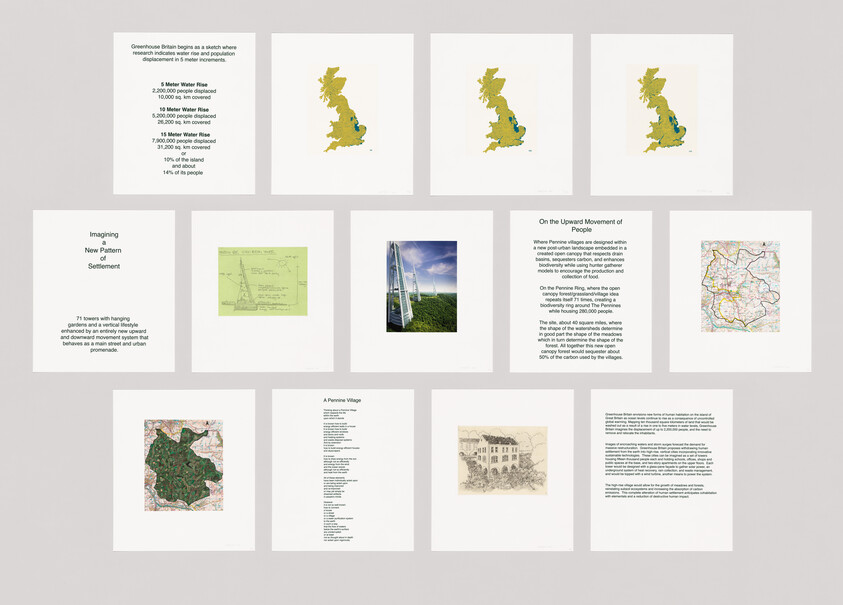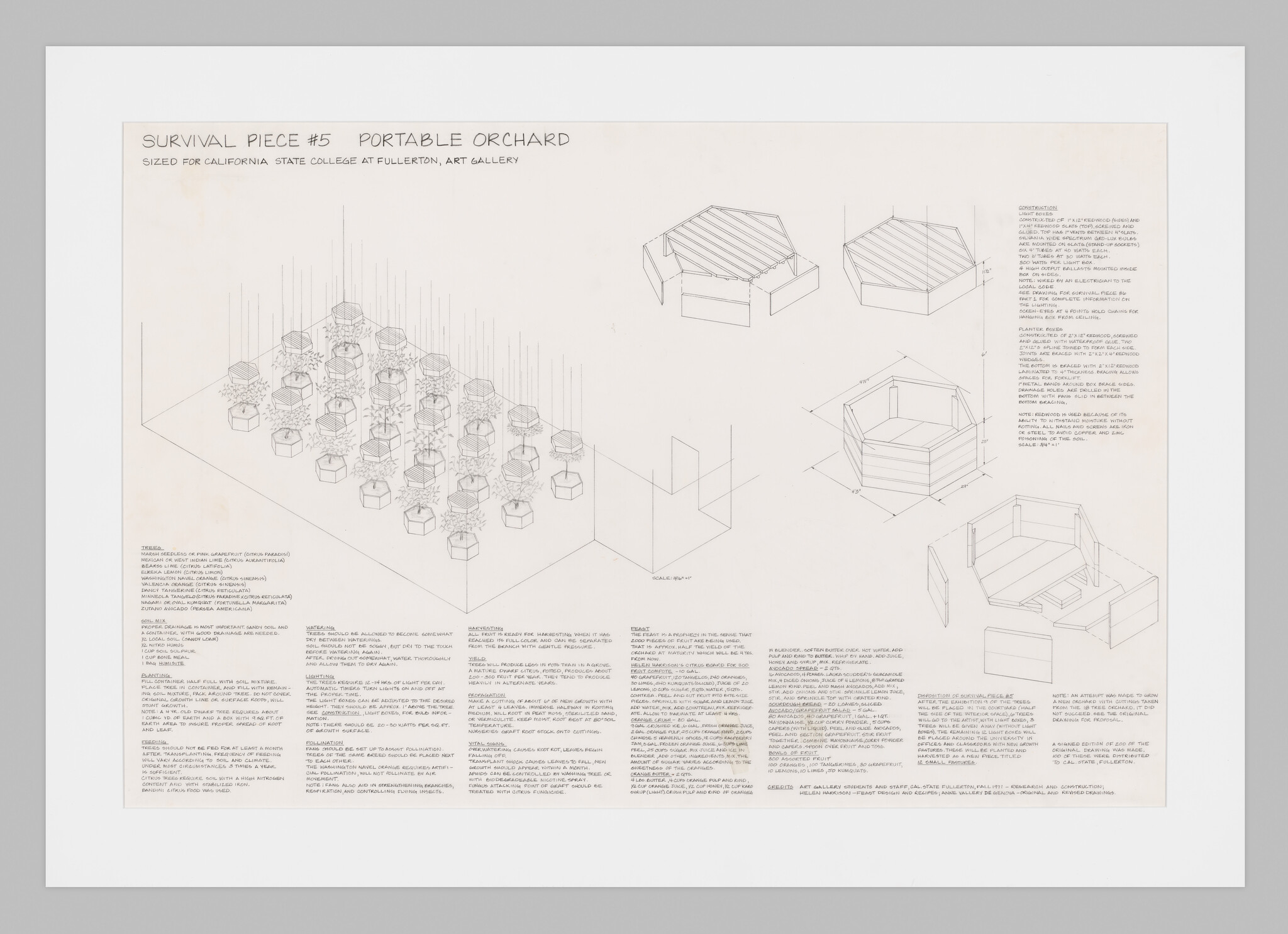Helen Mayer Harrison and Newton Harrison, Survival Piece #5: Portable Orchard (Blueprint), 1972-1973
June 25, 2024
0:00
Helen Mayer Harrison and Newton Harrison, Survival Piece #5: Portable Orchard (Blueprint), 1972-1973
0:00
Narrator: This drawing is almost 24 inches tall by almost 36 inches wide and is a thinly-drawn black line diagram on white paper. It features the Harrisons’ original plan for Survival Piece #5: Portable Orchard, and shows how all the planters, trees, and light boxes would have been laid out.
The bottom quarter of the diagram lists details about the work in handwritten but tidy lettering, and on the right side of the page are specifics about how the planters would be built.
In the center left side of the page are eighteen trees displayed in what is called an axonometric diagram, as if viewed from a top corner of the room in diagonal. This allows for each planter, tree, and light box to be drawn in a more three-dimensional way than a simple bird’s eye view would allow.
The boxy shapes in the blueprint are the planters that are under the trees and the corresponding six-sided grow lights that are over the trees. They create a honeycomb-like pattern on the page. There are also many vertical lines in the top half of the drawing, which are wires attaching each corner of the light boxes to the top of the undefined ceiling.
While the built aspects of the installation are uniform, each tree is rendered slightly differently. Apart from a few lines of writing at the lower left corner of the page, the trees are the only part of this diagram that are clearly hand-drawn. One tree, for example, has a trunk assembled of multiple vertical pencil marks. Six tidy thin branches move away from its center, with matching numbers of oblong leaves on each side.
Even though it is sketched, with small flicking marks throughout the leaves, the tree appears somewhat stylized, like a flower pressed in a book. There is a scientific quality to the drawing, and the text in the lower left adds to this feeling. Included are four lines indicating the different types of citrus trees intended for the grove. In parentheses, each one's latin name is included. Indian lime is Citrus Autantifolia, and so on.
Roxanne Smith, one of the curators working on the show, explains the importance of this diagram:
Roxanne Smith: As part of the work when we acquired it, we were given permission in the form of a letter from Newton Harrison, who was still living at the time, which basically gave us the curatorial right or leeway to interpret the work or the diagram. The directions for producing the portable orchard in whatever way would best bring forward the spirit of the work without necessarily adhering to every specification. So that means that one could produce this work with a different variant of citrus trees, for instance, or different types of soil, or modify the number of planters in the room. One could take it in an even more extreme direction and wonder if this work could be transposed for us to think about trees that actually grow in New York, for instance. In that case, we would've had a portable orchard of apple trees, for instance, something closer to home.
There's lots of other contradictions within this about the fact that, this is an ecological artwork, and that its aims were explicitly to find solutions for and to raise community awareness about the conditions of climate change and we thought about those contradictions in terms of what it meant for us to be transporting trees thousands of miles into our gallery for them to artificially grow.



.jpg)